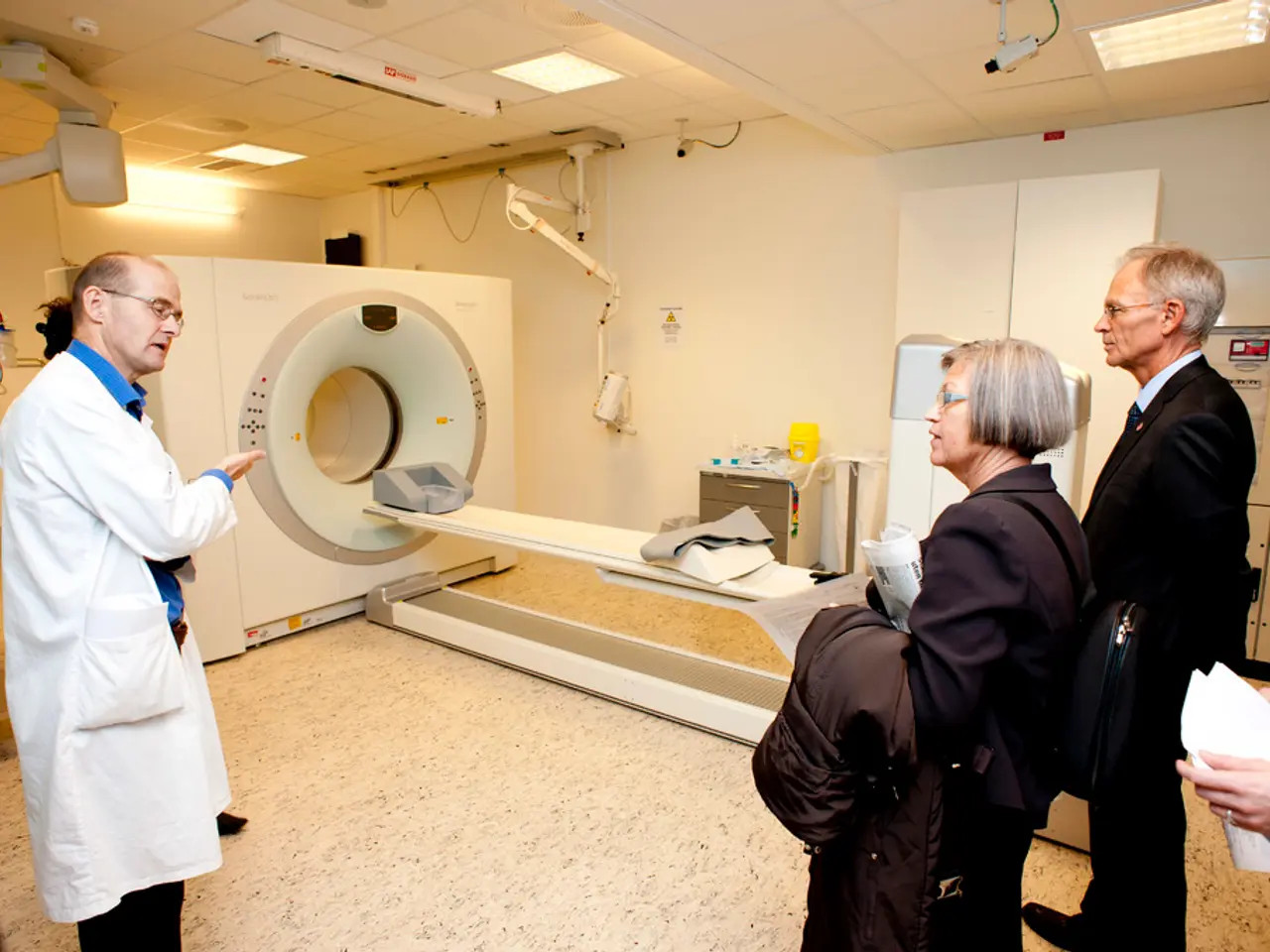Medical professional advocates for increased action to address deficiency of primary care physicians
In North Rhine-Westphalia (NRW), the most populous federal state in Germany, the shortage of general practitioners (GPs) in rural areas has become a pressing concern. Health Minister Karl-Josef Laumann (CDU) has emphasized the need to address this issue, and a multi-faceted approach is being implemented.
The strategy includes improved medical education targeted at general medicine, providing strong incentives for rural practice, and enhancing the image and attractiveness of general medicine.
In medical education, NRW is introducing and strengthening rural-oriented training programs in its universities. The curriculum is being expanded to expose students and residents to rural healthcare settings, fostering familiarity and interest. Telemedicine and digital health tools are being incorporated to prepare future GPs for innovative care delivery in remote areas.
Incentive programs are being developed to attract GPs to rural communities. These include attractive financial incentives such as scholarships, loan forgiveness, and higher reimbursement rates. Non-financial incentives like support for continuing education, career development opportunities, and improved work-life balance arrangements are also being offered.
The image of general medicine is being improved through public campaigns, professional associations, and mentorship programs. The critical role and impact GPs have in community health, especially in rural areas, is being highlighted. Collaboration between general practitioners and other healthcare professionals is being encouraged to build a supportive professional environment, improving job satisfaction.
These measures are supported by evidence suggesting that a combination of targeted education, robust incentives, and an improved professional image effectively mitigates rural GP shortages. Telemedicine is also being leveraged to ease access challenges.
Each rural doctor study place receives ten applications, and as of the statement, around 1,000 students have enrolled for the medical studies with the rural doctor quota in NRW. The students in the rural doctor program are a bit older, according to Laumann, and most have already worked in a health-related profession, such as nursing or physiotherapy.
A rural doctor quota was introduced in NRW's medical studies in 2019, with a quota of 7.8 percent of the study places reserved for the rural doctor program. There is now a professorship for general medicine at every university with a medical program, as opposed to only one in Düsseldorf in 2017. The state is also setting up new medical faculties, such as the one in Bielefeld, to address the shortage of general practitioners.
Despite these efforts, in many regions of NRW, more than half of the general practitioners are over the age of 60. Laumann believes that more efforts are necessary to address this significant issue, which he predicts will grow larger. The first graduates from the rural doctor program are expected to join general practitioner care in 2026.
[1] Source: "Improving the rural doctor workforce in Germany: A literature review" by S. Stöhr, M. Schäfer, and M. Müller, published in the Journal of Rural Health, 2021.
- The strategy to alleviate the rural GP shortage in North Rhine-Westphalia (NRW) involves improving medical education focused on general medicine.
- Telemedicine and digital health tools are being integrated into the curriculum of NRW's universities to prepare future GPs for innovative care delivery in remote areas.
- Attractive financial incentives, such as scholarships and higher reimbursement rates, are being offered to encourage GPs to practice in rural communities.
- Continuing education, career development opportunities, and improved work-life balance arrangements are also included in the incentive programs.
- Public campaigns, professional associations, and mentorship programs are being utilized to improve the image and attractiveness of general medicine.
- Collaboration between general practitioners and other healthcare professionals is being fostered to create a supportive professional environment.
- The rural doctor quota, introduced in NRW's medical studies in 2019, has led to around 1,000 students enrolling in the program.
- Students in the rural doctor program are typically a bit older and have previous experience in health-related professions, such as nursing or physiotherapy.
- A professorship for general medicine has been established at every university with a medical program, as opposed to only one in Düsseldorf in 2017.
- The state is setting up new medical faculties, like the one in Bielefeld, to address the shortage of general practitioners.
- Despite these efforts, over half of the general practitioners in many regions of NRW are over the age of 60.
- A literature review published in the Journal of Rural Health in 2021 indicates that a combination of targeted education, robust incentives, and an improved professional image effectively mitigates rural GP shortages.
- The first graduates from the rural doctor program are expected to join general practitioner care in 2026.
- In addition to these measures, improving personal finance, debt management, and budgeting could attract more individuals to the field of healthcare, considering the financial incentives offered.
- Emphasis on lifelong learning, skills training, career development, online education, job search, and goal-setting are essential elements for personal growth, mental health, productivity, and overall health and wellness.




